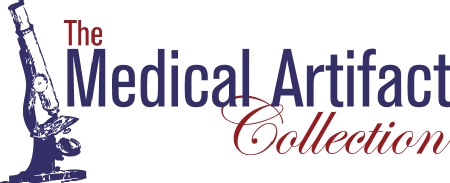The main purpose of the teaching modules is to broaden the inquiry skill and research techniques of students. After completing each module, students should: What is material culture? Material culture is the study of all the
things that individuals use, make, alter, discard or pass down to
others. Material culture includes a wide range of physical objects,
such as paintings and decorative arts; furniture; clothing and
jewellery; machines; gravestones, monuments and memorials; farming,
food preparation and manufacturing tools; items found in archaeological
excavations; scientific, medical and musical instruments; automobiles;
and houses and other buildings. Because these objects can be so diverse,
material culture study is interdisciplinary and is practised by
archaeologists, anthropologists, art historians, geographers,
folklorists, museologists as well as by historians. Why are objects important?
Objects, or artifacts, can act as another kind
of historical source, which can be integrated with archival documents,
photographs and secondary sources to form a more complete picture of the
past. These objects can fill in the blanks in the historical record, especially when studying the lives of ordinary people who did not leave behind personal
papers, or whose activities were not recorded by government documents,
or covered by newspapers or biographers. Objects may also challenge
the written record by showing what individuals believed or how they
acted in private compared to how they presented themselves in
public, or through their writings.
Module Instructions There are various models of material culture study, but our teaching modules are based upon a modified version of the Winterthur Protocol,
first developed by E. McClung Fleming of the Winterthur
Museum at the University of Delaware Early American Culture program. The first
stage of each module provides questions that guide students in
assessing the history, materials, construction, design and function of
selected artifacts by examining photographs of objects. This step can be completed
alone as a short assignment. The second stage requires students to
research the broader meanings of the objects, by identifying,
evaluating, analyzing and interpreting them. The final step provides
suggested primary and secondary sources to further the student's research in
order to complete a more lengthy assignment.
Brooks, Randall C. “Forty Years of Analytical Studies.” Bulletin of the Scientific Instrument Society 82 (2004): 4-9.
Prown, Jules David. “Mind in Matter: An Introduction to Material Culture Theory and Method.” In Art as Evidence: Writings on Art and Material Culture. Pp. 69-95. New Haven: Yale University Press, 2001.
Learning Through Objects: An Introduction to the Teaching Modules
Learning Objectives
Material Culture Methodology
Selected Readings on Material Culture
Deetz, James. In Small Things Forgotten: The Archaeology of Early American Life. New York: Doubleday, 1996.
Elliott, Robert S. “Material History – Testing a Method for Artifact Analysis.” Material History Bulletin 20 (1986): 87-92.
Finley, Gregg. “The Gothic Revival and the Victorian Church in New
Brunswick: Toward a Strategy for Material Culture Research.” Material History Bulletin 32 (1990): 1-16.
Fleming, E. McClung. “Artifact Study: A Proposed Model.” Winterthur Portfolio 9 (1974): 153-61.
Glassie, Henry. Material Culture. Bloomington: Indiana University Press, 1999.
Kingery, W. David, ed. Learning from Things: Method and Theory of Material Culture Studies. Washington, D.C.: Smithsonian Institution Press, 1996.
Lubar, Steven and W. David Kingery, eds. History from Things: Essays on Material Culture. Washington, D.C.: Smithsonian Institution Press, 1993.
Miller, Daniel, ed. Material Cultures: Why Some Things Matter. London: UCL Press, 1997.
Pocius, Gerald L., ed. Living in a Material World: Canadian and American Approaches to Material Culture. St. John’s, Newfoundland: Institute of Social and Economic Research, Memorial University of Newfoundland, 1991.
Schlereth, Thomas J., ed. Material Culture: A Research Guide. Lawrence: University of Kansas Press, 1985.
You are using a browser that is not standards-compliant. The information on this Web site will be accessible to you, but for a list of Web browsers that comply with the World Wide Web Consortium standards, please visit our Web standards page.

